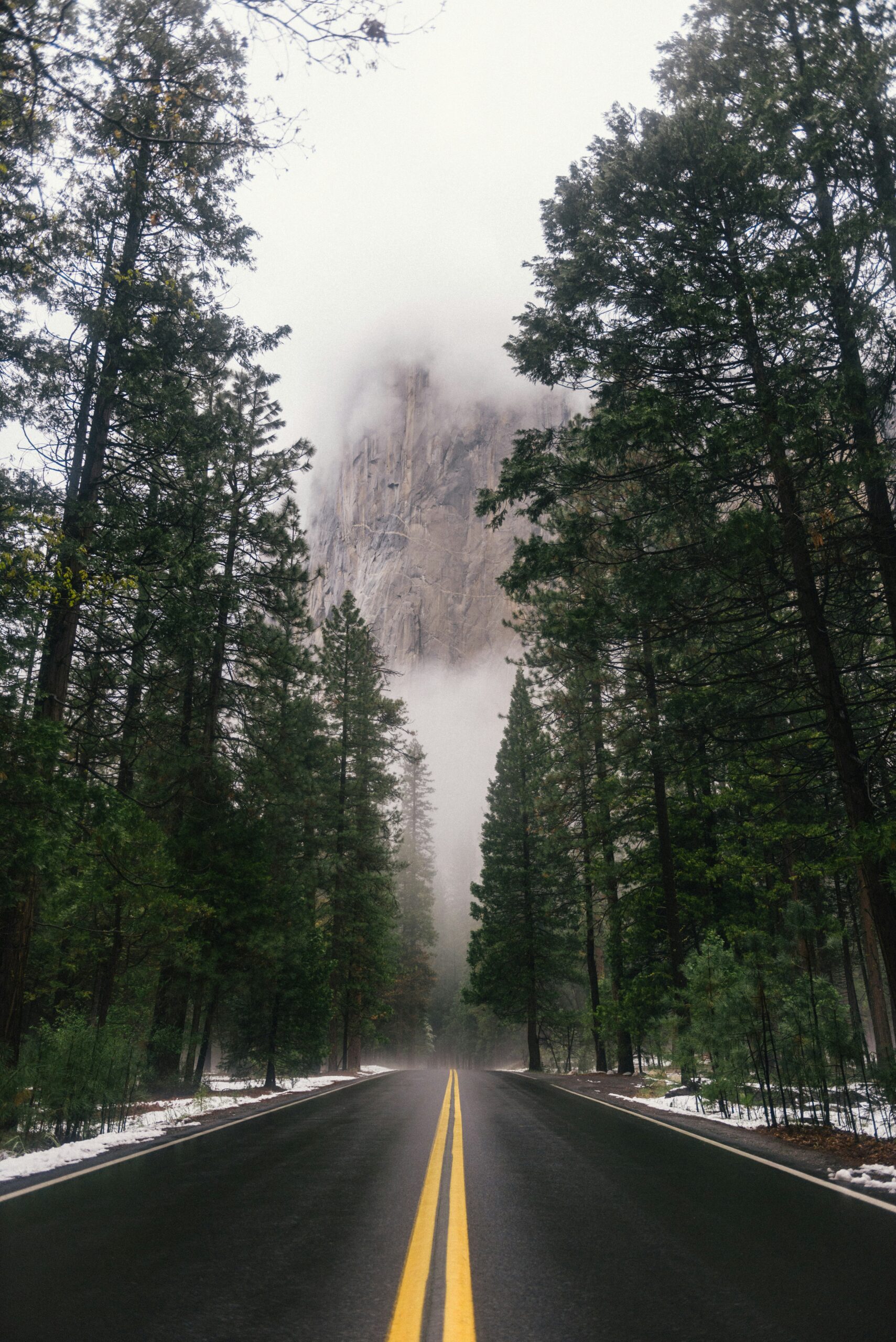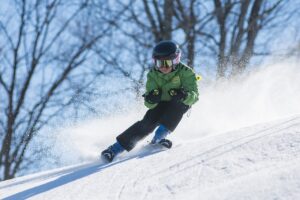Imagine the rush of speeding through snowy landscapes on a powerful snowmobile, the wind whistling past your ears as you navigate the trails with skill and precision. But have you ever wondered, can snowmobiles be driven on public roads? Well, the answer to that question is not as straightforward as you might think. Snowmobile enthusiasts often find themselves facing a myriad of regulations and restrictions when it comes to taking their beloved machines onto public roads. In this article, we’ll explore the various factors that determine whether snowmobiles can hit the roads, the challenges they face, and the potential solutions to this exhilarating dilemma. Get ready to uncover the truth and discover the possibilities that lie ahead for snowmobile enthusiasts like yourself.

What are Snowmobiles?
Snowmobiles, also known as snow machines or sleds, are vehicles designed to travel over snow and ice. These machines are typically used for recreational purposes, as well as for transportation in regions with heavy snowfall. Snowmobiles consist of a seat for the operator, handlebars for steering, and tracks or skis for mobility on the snow.
Definition
A snowmobile is a motorized vehicle that is specifically designed for travel over snow and ice. It is equipped with an engine, a proper suspension system, and wide tracks or skis that provide traction and stability on the snowy terrain. Snowmobiles often have the capacity to carry one or two passengers, making them a popular choice for winter adventures.
Parts of a Snowmobile
Snowmobiles are comprised of various components that enable their operation and functionality. Some key parts include:
- Chassis: The frame of the snowmobile, which supports all other components.
- Engine: The power source that propels the snowmobile forward. Engines are typically gasoline-powered, with two-stroke or four-stroke designs.
- Tracks: Wide rubber or composite belts with embedded studs or paddles that allow the snowmobile to maneuver across the snow.
- Skis: Narrow, elongated platforms at the front of the snowmobile that provide steering and control.
- Suspension: Systems of springs and shock absorbers that help smooth out the ride and absorb impacts from uneven terrain.
- Seat: The seating area where the operator and passengers sit.
- Handlebars: Controls attached to the front of the snowmobile, used for steering, throttle control, and braking.
- Lighting and Safety Features: Lights, reflectors, and other safety accessories to ensure visibility and compliance with regulations.
Laws and Regulations
When it comes to the operation of snowmobiles on public roads, specific laws and regulations vary depending on the local jurisdiction, state, and country. It is essential for snowmobile operators to familiarize themselves with the applicable laws to ensure their safety and legal compliance.
Local Laws and Regulations
Local municipalities may have their own specific regulations regarding snowmobile usage on public roads within their jurisdiction. These laws might include speed limits, permitted routes, and restrictions on the time of day or days of the week when snowmobiles are allowed on the roads.
State Laws and Regulations
In addition to local laws, state-level regulations govern the use of snowmobiles on public roads. These regulations typically cover the registration and licensing requirements for snowmobiles, age restrictions for operators, and guidelines for safe operation. Some states may also require specific equipment, such as lights or reflectors, to be installed on snowmobiles used on public roads.
Road Access Laws
Road access laws pertain to the rights and restrictions related to snowmobile usage on public roads. In some jurisdictions, snowmobiles are permitted to operate on designated roads during winter months. However, these laws may prohibit snowmobiles from accessing certain types of roads, such as highways or roads within urban areas. It is crucial to consult local road access laws to avoid any legal complications or safety hazards.
Pros and Cons of Snowmobiles on Public Roads
The use of snowmobiles on public roads has both advantages and disadvantages. It is important to weigh these factors when considering allowing or prohibiting snowmobile usage on public roads.
Advantages
- Increased Mobility: Allowing snowmobiles on public roads provides an additional means of transportation, particularly in regions with heavy snowfall. It can enhance mobility for residents, particularly in rural areas.
- Winter Tourism: Snowmobile access to public roads can attract winter tourists, boosting local economies and supporting businesses related to winter sports and recreation.
- Efficient Snow Removal: Snowmobiles can aid in quick and efficient snow removal on roads, ensuring safer conditions for other vehicles.
- Community Engagement: Snowmobile usage on public roads can foster a sense of community and camaraderie among residents, particularly in areas where snowmobiling is a popular recreational activity.
Disadvantages
- Safety Risks: Snowmobiles on public roads introduce potential risks for both snowmobile operators and other road users. Increased speed, limited visibility, and different handling characteristics can contribute to accidents and injuries.
- Noise and Environmental Impact: Snowmobile engines can produce significant noise pollution, disturbing the tranquility for residents and wildlife in areas near the roads. Additionally, these vehicles can have adverse impacts on the environment, including emissions and habitat disturbance.
- Conflict with Motor Vehicle Traffic: Snowmobiles, with their unique dimensions and handling characteristics, may create conflicts with regular motor vehicle traffic on public roads. This can lead to frustration and potential collisions.
- Maintenance and Infrastructure Costs: Allowing snowmobiles on public roads requires additional maintenance and infrastructure to ensure safe and efficient travel. This can incur additional costs for road maintenance and snowmobile-specific infrastructure.
Safety Concerns
Allowing snowmobiles on public roads raises legitimate safety concerns due to the unique characteristics and challenges associated with operating these vehicles in road traffic.
Limited Visibility
Snowmobiles are relatively low-profile vehicles, making them less visible to other road users, especially in inclement weather conditions such as snow or fog. This reduced visibility can increase the risk of accidents if proper precautions are not taken.
Difficulty in Maneuvering
Snowmobiles have different handling characteristics compared to regular vehicles, which can pose challenges when maneuvering on public roads. Their wider turns and longer stopping distances require operators to exercise caution and adjust their driving behavior accordingly.
Risk of Collisions
The coexistence of snowmobiles and regular motor vehicles on public roads increases the likelihood of collisions. Snowmobile operators must navigate through traffic, potentially encountering vehicles that are not accustomed to sharing the road with these unique vehicles. The speed differential and differing handling characteristics can lead to dangerous encounters if not managed carefully.

Impacts on the Environment
The use of snowmobiles on public roads can have environmental impacts that should be carefully considered to minimize negative effects on the surroundings.
Emissions
Snowmobile engines emit pollutants, including carbon dioxide, carbon monoxide, and nitrogen oxides, contributing to greenhouse gas emissions and air pollution. These emissions can harm air quality and contribute to climate change. Strategies such as enforcing emission controls or promoting the use of electric snowmobiles can help mitigate these environmental impacts.
Habitat and Wildlife Disturbance
Snowmobile usage on public roads can disrupt natural habitats and disturb wildlife. The noise and presence of snowmobiles can disrupt the normal behavior and movements of animals, potentially leading to stress or displacement. Sensitive ecosystems, such as those inhabited by endangered species, need to be protected from the disturbance caused by snowmobile traffic.
Advocacy and Opposition
The use of snowmobiles on public roads elicits diverse perspectives, resulting in both advocacy and opposition to this practice.
Advocacy for Snowmobile Usage on Roads
Advocates of snowmobile usage on public roads argue for increased access and mobility during winter months. They emphasize the economic benefits, such as increased tourism and the support for local businesses. Advocates also highlight the heritage and cultural significance of snowmobiling, particularly in regions with a long history of this activity.
Opposition to Snowmobile Usage on Roads
Opponents of snowmobile usage on public roads raise concerns about safety risks, environmental impacts, and conflicts with regular road traffic. They advocate for preserving the integrity of road infrastructure, focusing on the well-being of the environment, and prioritizing the safety of all road users. Noise pollution, wildlife disturbance, and potential damage to delicate ecosystems are also key concerns for opponents.

Alternatives to Snowmobiles on Public Roads
For areas where allowing snowmobiles on public roads is not deemed feasible or safe, several alternative options can be considered to meet transportation or recreational needs.
Snowmobile Trails
Designated snowmobile trails offer a controlled and safer environment for snowmobile enthusiasts. These trails are specifically designed and maintained for snowmobile use, providing a network of routes that can extend throughout a region. They offer a dedicated space for snowmobiling, minimizing conflicts with other road users and helping to ensure the safety of operators.
Snowcoaches
Snowcoaches are passenger vehicles designed for transport over snow and ice. They are similar to buses or vans but equipped with specialized tracks or oversized tires for mobility on the snow. Snowcoaches provide a comfortable and enclosed environment for passengers, making them suitable for sightseeing or transportation purposes in areas with heavy snow cover.
Snowshoeing and Cross-Country Skiing
For individuals seeking a more active and environmentally friendly alternative, snowshoeing and cross-country skiing offer opportunities to explore winter landscapes. These activities allow individuals to travel on their own power and experience the tranquility of snow-covered trails without the noise and environmental impact associated with motorized vehicles.
Case Studies
Examining specific areas that either allow or prohibit snowmobiles on public roads can provide insights into the practical implications and considerations associated with these policies.
Areas that Allow Snowmobiles on Roads
Regions that permit snowmobile usage on public roads often have well-established regulations and infrastructure to support this practice. These areas may have designated snowmobile routes, signage indicating shared road usage, and specific safety guidelines. Examples of such regions include certain parts of Alaska, rural parts of Canada, and some European countries with heavy snowfall.
Areas that Prohibit Snowmobiles on Roads
Conversely, regions that prohibit snowmobile usage on public roads prioritize safety, environmental preservation, or the maintenance of road infrastructure. These areas may redirect snowmobile traffic to designated trails or require snowmobile operators to transport their vehicles to specific access points. Examples of regions with restrictions on snowmobile usage on public roads include densely populated urban areas, national parks, and protected wildlife areas.
Conclusion
The question of whether snowmobiles should be driven on public roads requires a careful assessment of multiple factors. While snowmobile usage on roads offers increased mobility, opportunities for winter tourism, and community engagement, it also presents safety risks, environmental concerns, and challenges related to infrastructure and maintenance costs. Striking a balance between these considerations is essential to make informed decisions and ensure the safety, well-being, and enjoyment of all road users.
References
- “How Snowmobiles Work” – HowStuffWorks
- “Snowmobile Safety” – Minnesota Department of Natural Resources
- “Greenhouse Gas Emissions from Snowmobiles” – US Environmental Protection Agency
- “The Sound of Winter: Snowmobile Noise and its Health and Environmental Implications” – University of Nebraska-Lincoln
- “Snowmobile Tracks Leave a Fading Whisper Across Parks and Reserves” – National Park Service





